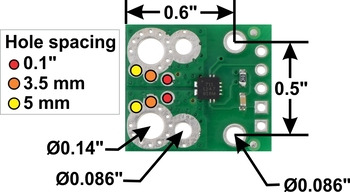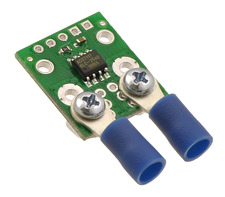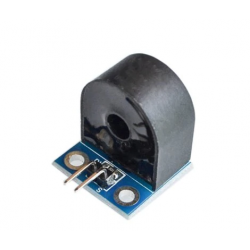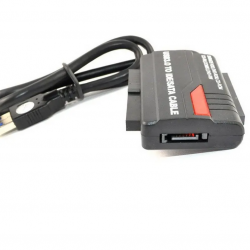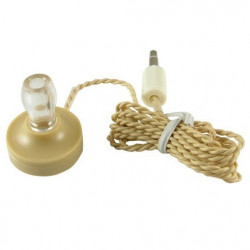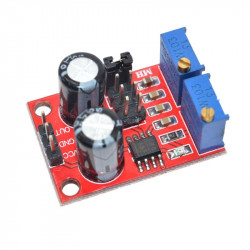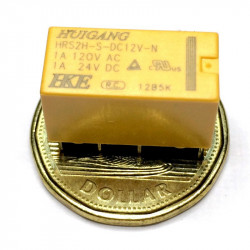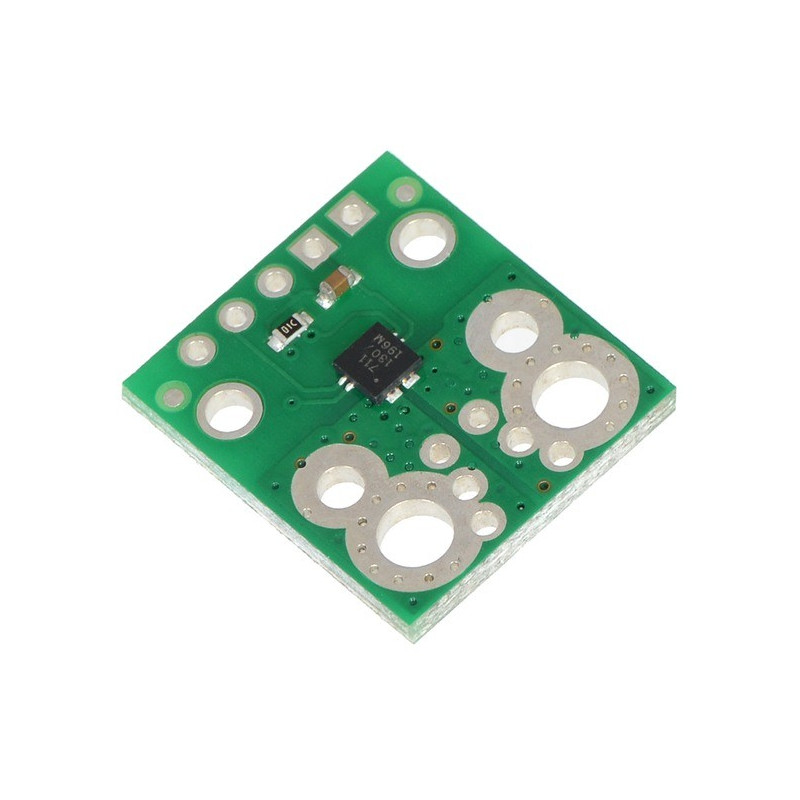






location_on 4131 Fraser St. Vancouver BC Get Directions
phone 604-875-1993 Call us
access_time Hours
| Monday - Friday | 9AM - 5:30PM |
| Saturday - Sunday & Holidays | Closed | See Holiday Hours |
















ACS711EX CURRENT SENSOR CARRIER -15.5A TO +15.5A
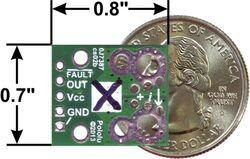  |
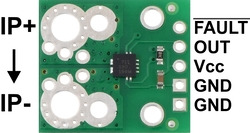  |
This current sensor is a carrier board or breakout board for Allegro’s ACS711KEXLT-15AB-T Hall effect-based linear current sensor with overcurrent fault output; we therefore recommend careful reading of the ACS711 datasheet (551k pdf) before using this product. This sensor has an operating voltage of 3 V to 5.5 V and an output sensitivity of 90 mV/A when Vcc is 3.3 V (or 136 mV/A when Vcc is 5 V). The following list details some of the sensor’s key features:
The pads are labeled on the bottom silkscreen, as shown in the picture to the right. The silkscreen also shows the direction that is interpreted as positive current flow via the +i arrow.
This 15.5 A current sensor is marked with a black X. We also sell a 31 A version that uses the same carrier PCB; you can distinguish the versions by reading the text on the IC or by looking at the color of the X on the bottom silkscreen.
This sensor is very similar to our original ACS711 -12.5 to +12.5 A Current Sensor Carrier, but uses a smaller “EX” package that has a larger optimized sensing range and reduced internal resistance. The board size, pinout, and hole locations are all unchanged, so it can generally be used as a drop-in replacement for our ACS711 carriers with “LC” packages.
The sensor requires a supply voltage of 3 V to 5.5 V to be connected across the Vcc and GND pads, which are labeled on the bottom silkscreen. The sensor outputs an analog voltage that is linearly proportional to the input current. The quiescent output voltage is Vcc/2 and changes by 90 mV per amp of input current (when Vcc = 3.3 V), with positive current increasing the output voltage and negative current decreasing the output voltage. The relationship between the instantaneous input current, i, and sensor output voltage, VOUT, can be represented by the following equations:
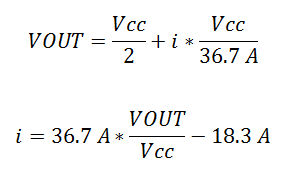 |
The FAULT pin is normally high and latches low when the current exceeds ±15.5 A. Once the FAULT pin is latched low, the only way to reset it is by toggling power on the Vcc pin. In our tests, this module was able to handle 15 A of continuous current without exceeding 50°C, with no cooling beyond the heat dissipation of the PCB.
|
|
The input current can be connected to the board in a variety of ways. Holes with 0.1″, 3.5 mm, and 5 mm spacing are available as shown in the diagram above for connecting male header pins or terminal blocks. For high-current applications, you can solder wires directly to the through-holes that best match your wires, or you can use solderless ring terminal connectors, as shown in the picture above. The large through-holes are big enough for #6 screws.
Warning: This product is intended for use below 30 V. Working with higher voltages can be extremely dangerous and should only be attempted by qualified individuals with appropriate equipment and protective gear.
The board has two mounting holes on the logic side of the board. These mounting holes are 0.5" apart and are designed for #2 screws.
This board ships assembled with all surface mount components, and a 5×1 strip of 0.1″ header pins is included but not soldered in, as shown in the picture below.
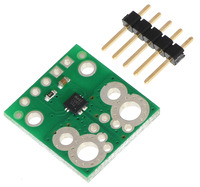  |
| ACS711EX current sensor carrier with included 5 × 1 0.1″ header pins. |
|---|
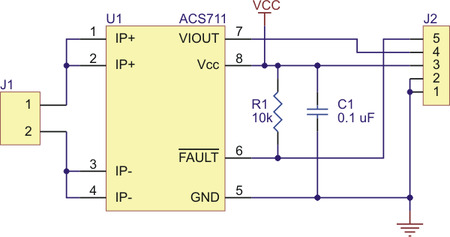  |
| ACS711 current sensor carrier schematic diagram. |
|---|

